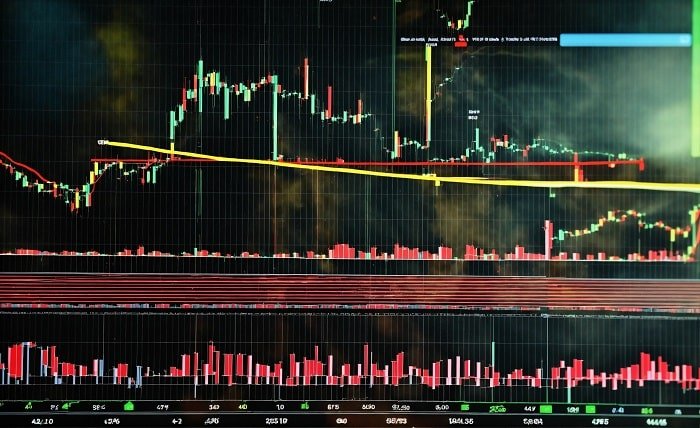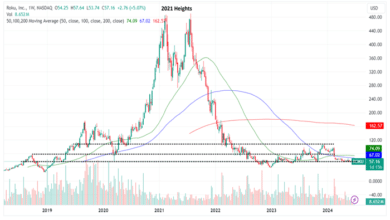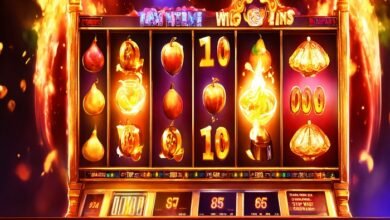Currency Trade POE: A Comprehensive Guide

Introduction
Currency trade POE (Path of Exile) is a term used within the world of online gaming to describe the exchange of virtual currency, specifically in the game Path of Exile (POE). However, the term “currency trade POE” also finds relevance in the broader context of forex trading, where currency trading occurs globally. Both fields use the concept of exchange, but the methods, risks, and implications differ greatly.
In the context of Path of Exile, players trade various in-game items using an in-game currency. However, in global financial markets, currency trade POE involves exchanging one currency for another to make a profit based on economic trends and fluctuations. Understanding how currency trading works, whether in a gaming or financial environment, requires a strategic mindset and a solid grasp of the basics.
What is Currency Trade POE in the Context of Path of Exile?
In Path of Exile poe trade refers to the exchange of virtual currency items used to enhance gameplay, such as Chaos Orbs, Exalted Orbs, and Fusings. These currencies allow players to trade and craft items with specific attributes, making it a vital aspect of the game’s economy. Just like real-world currency exchanges, currency trade POE in Path of Exile depends on supply and demand dynamics.
Players engage in currency trade POE for several reasons, including upgrading their equipment, purchasing rare items, and improving their overall gameplay experience. The value of each currency item is determined by its utility in crafting and trading, creating a unique virtual economy within the game.
How Currency Trade POE Works in Path of Exile
In Path of Exile, currency trade POE operates on a system of item value. Each currency item serves a specific function within the game. For example, Chaos Orbs are the most common form of currency and are primarily used for crafting, while Exalted Orbs are more valuable and are typically used for high-end crafting or trading. Players can trade these items with others to obtain better gear or items, making currency trade POE an essential part of gameplay.
To initiate a currency trade, players typically use the game’s trading system or third-party websites dedicated to Path of Exile item exchanges. This process involves negotiating prices, making offers, and executing transactions based on current market values. The success of a currency trade POE largely depends on the player’s knowledge of market trends, item scarcity, and in-game currency demand.
Currency Trade POE in the Forex Market
In the financial world, currency trade POE refers to the exchange of one country’s currency for another in the foreign exchange (forex) market. Forex trading is a massive global market, with over $6 trillion traded daily. Just as in Path of Exile, where virtual currency is exchanged for items, real-world currency trade POE allows investors to buy, sell, and speculate on the value of different currencies.
Forex traders profit from currency trade POE by buying currencies when they are undervalued and selling them when they are overvalued. The key to success in forex trading is understanding global economic trends, geopolitical events, and the underlying factors that influence currency values.
The Basics of Currency Trade POE: How It Works
At its core, currency trade POE revolves around the concept of buying and selling different currencies based on exchange rates. In the forex market, currencies are traded in pairs, such as EUR/USD (Euro to US Dollar) or GBP/JPY (British Pound to Japanese Yen). When you engage in currency trade POE, you are essentially betting on the future performance of a particular currency relative to another.
The exchange rate between two currencies is influenced by various factors, including interest rates, inflation, and economic data. Traders who engage in currency trade POE must closely monitor these factors to make informed decisions about when to buy or sell currencies for profit.
Major Currency Pairs in Currency Trade POE
In currency trade POE, the most common currency pairs involve major global currencies. These include:
- EUR/USD (Euro/US Dollar): The most traded currency pair globally.
- GBP/USD (British Pound/US Dollar): Another popular currency pair.
- USD/JPY (US Dollar/Japanese Yen): A key pair in the Asian forex market.
- AUD/USD (Australian Dollar/US Dollar): Represents the Australian economy’s performance.
Each of these pairs reflects the relative value of one currency against another. Currency traders analyze these pairs using technical and fundamental analysis to predict future market movements.
The Role of Economic Indicators in Currency Trade POE
Economic indicators play a significant role in currency trade POE. In both the world of Path of Exile and real-world forex trading, understanding the macroeconomic factors that influence currency value is key to making informed decisions.
For forex traders, economic indicators such as GDP growth rates, employment data, interest rates, and inflation figures can provide valuable insights into the health of an economy. These factors, when analyzed correctly, allow traders to predict currency movements and make more informed trades.
Risk Management in Currency Trade POE
Currency trade POE, whether in the game or in real-world forex markets, carries inherent risks. In Path of Exile, the value of in-game currencies can fluctuate depending on in-game updates, item availability, and changes to the game’s economy. Similarly, in the forex market, exchange rates can change rapidly due to geopolitical events, natural disasters, and other factors.
To mitigate these risks, traders must employ risk management strategies such as setting stop-loss orders, diversifying their investments, and only risking a small percentage of their capital on each trade. In Path of Exile, players can manage risk by carefully observing the value of items before engaging in currency trades.
Technical Analysis in Currency Trade POE
Technical analysis is a crucial aspect of currency trade POE, especially in the forex market. Traders use charts, indicators, and patterns to identify potential price movements and trends in the market. By analyzing historical price data, traders can make predictions about future currency value fluctuations.
In Path of Exile, players can also use similar methods to analyze in-game item trends, studying market history to predict future value shifts in currency items. While the tools differ between the game and real-world trading, the underlying principle remains the same: predicting price movements based on historical data.
Fundamental Analysis in Currency Trade POE
Fundamental analysis is another vital tool in currency trade POE, particularly in the forex market. Unlike technical analysis, which focuses on price movements, fundamental analysis looks at economic, political, and social factors that might impact currency values.
For example, changes in a country’s interest rate policies or inflation rates can affect the strength of its currency. Forex traders use these insights to make predictions about how currencies will perform in the future. In Path of Exile, players also consider the broader game environment, such as upcoming patches or expansions, to predict how currency values will evolve.
Currency Trade POE Strategies for Beginners
Whether you’re a new player in Path of Exile or a beginner in forex trading, there are several strategies you can use to succeed in currency trade POE. Beginners should start by focusing on learning the fundamentals of the game or the forex market.
In Path of Exile, beginners might focus on gathering common currencies like Chaos Orbs to build their wealth slowly. In the forex market, new traders might start by trading in major currency pairs, where volatility is lower, and price movements are more predictable. Regardless of the field, patience, knowledge, and a solid strategy are key to success in currency trade POE.
Advanced Currency Trade POE Strategies
For experienced players or traders, advanced strategies are required to maximize profits. In Path of Exile, this could involve speculating on rare or high-value currencies like Exalted Orbs or taking advantage of market shifts caused by patches or game updates.
In the forex market, advanced traders use strategies such as swing trading, scalping, and carry trades to profit from market movements. Advanced currency trade POE requires a deep understanding of market analysis, risk management, and trading psychology to ensure long-term success.
Tools and Platforms for Currency Trade POE
Whether you are trading in Path of Exile or in the forex market, there are a variety of tools and platforms available to help you succeed in currency trade POE.
For Path of Exile players, websites like POE.trade and other third-party platforms provide real-time updates on currency prices and allow for quick exchanges. In the forex market, platforms such as MetaTrader 4 (MT4) and MetaTrader 5 (MT5) offer tools for technical analysis, charting, and automated trading.
The Importance of Timing in Currency Trade POE
Timing is everything in currency trade POE. In Path of Exile, the value of in-game currencies can change rapidly, particularly when new patches or seasons are released. Similarly, in forex trading, currencies can fluctuate significantly due to economic news, central bank decisions, or geopolitical events.
Successful traders and players learn to time their currency trades effectively by staying updated on the latest news and developments. They also understand that currency trade POE is not just about reacting to the market but anticipating potential changes in advance.
The Psychology of Currency Trade POE
Psychology plays a significant role in currency trade POE, whether you’re engaging in virtual currency exchange in Path of Exile or trading real-world currencies. In both cases, emotions like fear and greed can cloud judgment and lead to poor decision-making.
Traders and players alike must learn to manage their emotions and stick to their strategies, even in the face of losses or market volatility. Successful currency trade POE requires mental discipline, patience, and the ability to stay focused on long-term goals rather than short-term fluctuations.
Conclusion
Currency trade POE is a fascinating concept, whether in the context of Path of Exile or the global forex market. While both worlds operate under different circumstances, the fundamental principles of currency exchange remain the same. Whether you’re crafting items in a game or speculating on currencies in the global market, understanding market trends, timing your trades, and managing risks are essential to success.
For players in Path of Exile, currency trade POE offers an exciting way to enhance your gaming experience, while for forex traders, currency trade POE provides an opportunity to profit from the fluctuating values of global currencies. By mastering the art of currency trade POE, you can become a skilled trader in both the virtual and real worlds.
FAQs
1. What is currency trade POE in Path of Exile?
Currency trade POE in Path of Exile refers to exchanging in-game currency items, like Chaos Orbs and Exalted Orbs, to acquire rare items or craft gear.
2. Can I make real money from currency trade POE?
While it’s possible to trade currency items within Path of Exile, making real money requires third-party marketplaces, which may not be supported by the game.
3. How does currency trade POE work in forex?
In forex, currency trade POE involves exchanging one currency for another to profit from exchange rate fluctuations.
4. What are the risks of currency trade POE?
The risks include market volatility, the potential for financial loss, and the psychological pressure of making quick decisions under uncertain conditions.
5. How can I improve my success in currency trade POE?
Educating yourself on market trends, using risk management strategies, and practicing disciplined trading are key to success in currency trade POE.




